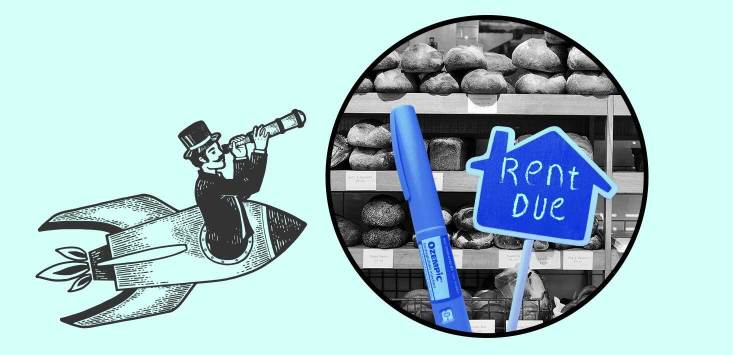
Image: SmartCompany
In September 2023, Unity, a video game development tool company, announced a significant change to its pricing strategy. A change so significant that many of the game developers who rely on Unity’s tools wondered if they would be able to continue to operate. This decision turned into a drama that’s still unravelling two months later.
When I first heard about this story, my first thought was ‘I wonder if anyone imagined that scenario?’. From Unity’s side, did they plan for different levels of backlash? And from the developers’ side, had they considered the possibility of pricing model changes of their most important tools? (The outcome suggests no, and no).
Why scenario planning
Scenario planning expands your thinking about what might happen in the future, and the possible impacts on you, your business, or your community. Done well, it’s more than a thought experiment and influences the decisions you make today to prepare for tomorrow.
Importantly, it’s not about ‘getting it right’ or predicting the future. In the same way as it’s not about turning everyone into ‘preppers’ and stockpiling Who Gives A Crap (see: 2020).
DIY scenarios
Probably the most popular way of building scenarios is using a 2×2 matrix which creates four combinations of possible futures.
The axes of the 2×2 are created using two conditions where there’s already some signs of change, and those changes have a high level of uncertainty and would have a high impact on your business.
(That’s all a polite way of saying ‘pick two things that feel really scary and you don’t want to think about’.)
For example;
- Interest rates fluctuations
- Food/materials cost fluctuations
- Supply chain issues for key items
- AI or other technology giving people other options than working with you
- Major supplier, customer, distributor, or partner going out of business
- Key customer(s) putting your contract out to tender
- E-commerce platform changing its pricing structure
- Your most popular social media platform shifting its algorithm away from the type of content that’s successful for you
- A new competitor in your market
- Funding decision changes by banks/investors/government
- Customer preference changing demand
- Legislation affecting whether your product/service is still legal/available
- Climate change impacts to your product/service demand or availability
Once you’ve come up with your list of high uncertainty/high impact items, pick two that are different from each other (but equally vomit-inducing), and plot these on your 2×2.
Let’s pretend I run a small chain of bakeries in the inner suburbs of a major city. I might pick two uncertainties I’m most concerned about from the signals I’m seeing right now; the use of Ozempic for weight loss and the fact it’s already influencing people’s eating habits, and the continually increasing rent rates for commercial property.

Level up: Make them real
Your scenarios will become more memorable and provocative when you start building stories around them. For each of the four options, imagine what that future looks like to one of your customers, staff, or someone in your community. Give that person a name and write a story about a day in their life in that future scenario, and their interactions with you/your business.
Note: we’re not talking works of sci-fi, the scenarios should feel like a stretch of the imagination, but not so much that they’re implausible (so no bending the fundamental laws of time or space).
The purpose of creating scenarios is to stress-test your business plans or strategy against them. What parts of your business prove to be pretty fragile? What surprises you? What assumptions have you made that may or may not be true?
As I was writing this article, Wharton associate professor (and serial AI experimenter), Ethan Mollick shared this LinkedIn post about using Chat GPT to create scenarios. Whilst the scenarios churned out are pretty bland, they might still be a good place to start with your first experiments with scenarios.
See you in the future
René Rohrbeck’s 2018 study into corporate foresight showed that future-prepared organisations outperformed the average by a 33% higher profitability and 200% higher growth. Companies with foresight deficiencies faced a performance discount of between 37% and 108%.
When you pair this with the fact that in a CEO survey from earlier this year, 40% of global CEOs (and 28% of Australian CEOs) think their organisation will no longer be economically viable in ten years’ time, it’s clear that we have a serious deficit of thinking ahead. Today is happening at the expense of tomorrow.
The steps above are not an exhaustive approach to building scenarios, but they will start to shift your thinking further ahead and get you into the habit of noticing more trends and signs that things are changing and using those to spark your imagination of what might happen next, and what you can do now.
Steph Clarke is a futurist and facilitator based in Melbourne.
Handpicked for you

My first business kikki.K fell into administration. Here’s how I bounced back



COMMENTS
SmartCompany is committed to hosting lively discussions. Help us keep the conversation useful, interesting and welcoming. We aim to publish comments quickly in the interest of promoting robust conversation, but we’re a small team and we deploy filters to protect against legal risk. Occasionally your comment may be held up while it is being reviewed, but we’re working as fast as we can to keep the conversation rolling.
The SmartCompany comment section is members-only content. Please subscribe to leave a comment.
The SmartCompany comment section is members-only content. Please login to leave a comment.